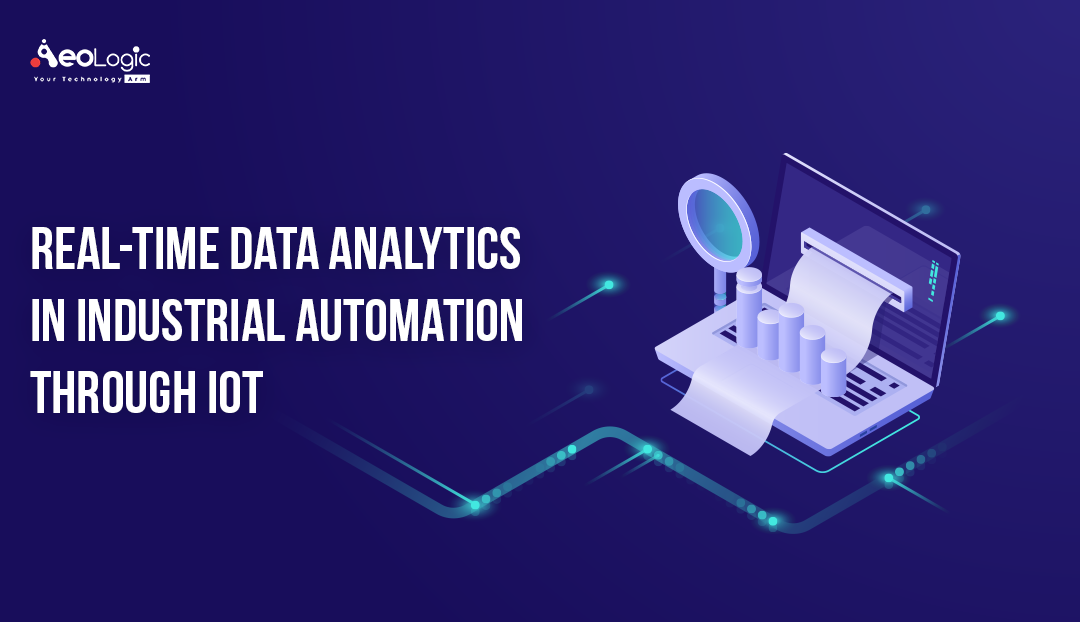Welcome to the future of industrial automation where real-time data analytics meets the Internet of Things (IoT) to revolutionize the way industries operate. Are you tired of the word “potential” being thrown around and want to see actual, transformative results? Then you’re in the right place. We’re diving deep into how Real-Time Data Analytics in Industrial Automation through IoT is changing the game. Strap in, and let’s go for a ride through the automated world of tomorrow, today.
What is Real-Time Data Analytics in Industrial Automation through IoT?
Let’s break it down. Imagine an orchestra of data points, sensors, and algorithms that work in perfect harmony to create a seamless symphony of industrial processes. That’s what Real-Time Data Analytics in Industrial Automation is all about. The concept takes raw data from IoT devices, analyzes it instantaneously, and uses the insights to adjust industrial systems automatically. In short, it’s the brainchild of analytics and IoT, aimed at making industries smarter, faster, and more efficient.
Why is It So Crucial?
The Role of Data
Data is like oil in the industrial machinery. It lubricates the entire system, enabling smooth operations. However, just having data is not enough. It needs to be processed and utilized effectively.
Time is Money
In industries like manufacturing, oil and gas, or healthcare, a slight delay in response time can result in losses of millions of dollars or even risk human lives. Real-Time Data Analytics in Industrial Automation ensures that your decisions are timely and accurate, reducing the scope for errors and downtimes.
Also Read: How AI is Improving Agriculture Sustainability in India
How Does It Work?
It might sound like science fiction, but the mechanics are pretty straightforward.
- Data Collection: IoT sensors deployed across the industrial floor collect data in real-time.
- Data Transmission: This data is then sent to a central repository or cloud service.
- Data Processing: Analytics tools process this information almost instantaneously.
- Action: Automated systems take immediate action based on the insights derived.
| Step | Function | Example |
|---|---|---|
| Data Collection | Acquire raw data | Temperature sensor |
| Data Transmission | Send data to central hub | Wi-Fi, Ethernet |
| Data Processing | Convert data to insights | Machine Learning |
| Action | Implement immediate change | Adjust temperature |
Impact of Real-Time Data Analytics in Industrial Automation through IoT
So, you’re still on the fence about whether Industrial Automation through IoT is worth your time and investment? Look no further, because we’re going to delve into the nitty-gritty of the critical advantages that this groundbreaking technology offers.
1) Increased Operational Efficiency
Ever thought about how much time and resources are wasted due to inefficient processes? With real-time data analytics, you can streamline workflows and resource allocation, resulting in a highly optimized operational environment. Say goodbye to guesswork; data analytics provides the concrete information you need to maximize productivity.
How Does It Achieve This?
- Real-time monitoring allows immediate identification of bottlenecks.
- Machine learning algorithms predict maintenance needs, reducing downtime.
- Energy consumption can be optimized.
2) Accelerated Decision-Making
Decision-making is often a long-winded process, requiring meetings, reports, and endless discussions. Industrial Automation through IoT speeds up this process by delivering actionable insights on the fly. Whether it’s quality control or supply chain adjustments, decisions can be made almost instantly.
How Does It Achieve This?
- Data visualization tools make it easy to understand complex datasets.
- Real-time alerts notify stakeholders as soon as an issue is detected.
- Predictive analytics forecasts trends, enabling proactive decisions.
3) Enhanced Safety Measures
Industrial environments can be hazardous. From factory floors to chemical plants, ensuring the safety of human resources is paramount. Real-time analytics can instantly detect anomalies that could lead to hazardous conditions, taking corrective action before it escalates into a serious issue.
Also Read: The Role of Automation in Streamlining Banking Operations
How Does It Achieve This?
- Sensors can detect hazardous gas leaks, temperature spikes, or mechanical failures.
- Automated systems can shut down potentially dangerous operations instantly.
- Continuous monitoring ensures 24/7 safety.
4) Significant Cost Savings
Cost-efficiency is a goal for any industry, and this is another area where Real-Time Data Analytics shines. By optimizing various processes, reducing downtime, and preventing mishaps, significant cost savings can be realized.
How Does It Achieve This?
- Predictive maintenance reduces the need for expensive emergency fixes.
- Energy-efficient operations lower utility bills.
- Resource optimization ensures you get more out of less.
5) Competitive Advantage
In today’s fast-paced world, standing still is the same as moving backward. Industries that are quick to adapt to new technologies like Real-Time Data Analytics find themselves miles ahead of competitors who are slow to change.
How Does It Achieve This?
- Automation and efficiency lead to faster time-to-market for products.
- Enhanced customer satisfaction due to better quality and quicker service.
- Data-driven strategies allow for more effective market penetration.
Also Read: Farmer Centric Solutions for Agriculture Sector in India
Challenges and Solutions of Real-Time Data Analytics in Industrial Automation through IoT
Let’s dig into some of the challenges you might face and explore the solutions that can help you overcome them.
1. Security Risks
With an increasing number of IoT devices being connected to your network, the potential for security vulnerabilities rises substantially.
Solution
- Implement strict security protocols, including data encryption, multi-factor authentication, and regular security audits.
2. Data Overload
With sensors sending data constantly, the sheer volume can be overwhelming, leading to data clutter.
Solution
- Utilize efficient data filtering algorithms and storage solutions that can handle large sets of data without sacrificing speed.
3. Integration Complexity
Merging Real-Time Data Analytics through IoT with existing systems can be complicated and disruptive to current operations.
Solution
- Phased integration with legacy systems, combined with thorough testing and employee training, can ease the transition.
4. Regulatory Compliance
Different industries have varying standards and regulations around data storage, processing, and security.
Solution
- Stay abreast of relevant laws and regulations and design your system to be compliant from the ground up.
5. High Initial Cost
Setting up the IoT sensors, analytics software, and other related technology can require a significant initial investment.
Solution
- While initial costs can be high, the ROI is generally favorable in the long term, thanks to efficiency gains, reduced downtime, and other cost-saving measures.
6. Lack of Expertise
Companies may not have the in-house expertise needed to manage and interpret real-time data analytics effectively.
Solution
- Investing in training programs or partnering with expert consultants can bring your team up to speed with the latest technologies and best practices.
Boost your business with our IoT Solutions
Final Words
Real-Time Data Analytics is not just a buzzword; it’s the cornerstone of modern industrial processes. From maximizing efficiency to improving safety, the advantages are numerous. Challenges exist, but they are surmountable. The future is here, and it’s automated, intelligent, and incredibly exciting.
Are you ready to be a part of this industrial revolution? The journey towards Real-Time Data Analytics in Industrial Automation through IoT begins now.
Connect with Aeologic Technologies!
FAQ
What industries can benefit from this technology?
Virtually all industries can benefit, including healthcare, manufacturing, retail, and more.
How easy is it to implement?
It can be complex, but the long-term gains far outweigh the initial pains.






